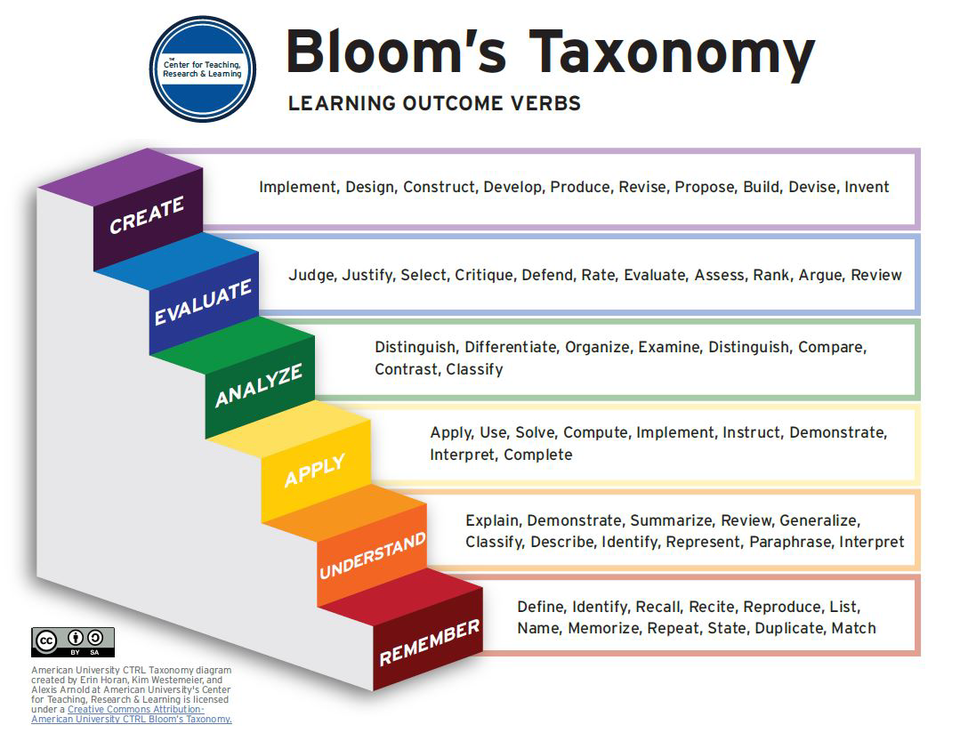Difference between revisions of "DRAFT Page 01"
| Line 13: | Line 13: | ||
<p style="padding-bottom: 3px;"> | <p style="padding-bottom: 3px;"> | ||
On the other hand, '''passive learning''', such as only watching a lecture video or only reading lecture content can be useful at promoting learning at the lower end of a taxonomy of learning such as – to ‘remember’ and ‘understand’ – but is not as good at promoting higher-level skills like ‘apply’, ‘analyse’ and ‘evaluate’" (Jess Gifkins). In this framework, the instructor is the subject matter expert whose role is to lecture to students, and students are expected to absorb the material.<br/> | On the other hand, '''passive learning''', such as only watching a lecture video or only reading lecture content can be useful at promoting learning at the lower end of a taxonomy of learning such as – to ‘remember’ and ‘understand’ – but is not as good at promoting higher-level skills like ‘apply’, ‘analyse’ and ‘evaluate’" (Jess Gifkins). In this framework, the instructor is the subject matter expert whose role is to lecture to students, and students are expected to absorb the material.<br/> | ||
| − | [[File:CTRL-Taxonomy.png|Staircase Model of Bloom's Cognitive Taxonomy]] | + | [[File:CTRL-Taxonomy.png|Staircase Model of Bloom's Cognitive Taxonomy|960px|alt=Bloom's Taxonomy: Learning Outcome Verbs. Long description provided in link after image.]] |
</p> | </p> | ||
Revision as of 09:00, 27 September 2021
Draft Page Title: Active Learning in Online Classes
What Does Active Learning Look Like in an Online Class? Consider This!
Click through the slideshow below (or read the slideshow's text transcript) to experience an example of active learning in an online class, from the students' perspective.
In the scenario above, the activities the students took part in allowed them to think about what they were learning and participate in the learning process in various ways. Creating opportunities for students to be involved in their own learning and engaging students in this way is the nature of a teaching strategy known as active learning. “[A]ctive learning responds to traditional lecture formats with more engaged activities that invite students to participate in learning, including developing conceptual awareness, applying knowledge through experience, and transferring skills across contexts [to help them] ascend Bloom’s Taxonomy [for the Cognitive Domain], from remembering and understanding to analyzing and creating” (Yale).
What Are the Class Dynamics of Active Learning?
In a class rich with active learning, the instructor serves as a facilitator and model, and students are actively involved in the learning process and are asked to reflect on their learning, “…building mental models of whatever is being learned, consciously and deliberately testing those models to determine whether they work, and then repairing those models that appear to be faulty” (Michael).
On the other hand, passive learning, such as only watching a lecture video or only reading lecture content can be useful at promoting learning at the lower end of a taxonomy of learning such as – to ‘remember’ and ‘understand’ – but is not as good at promoting higher-level skills like ‘apply’, ‘analyse’ and ‘evaluate’" (Jess Gifkins). In this framework, the instructor is the subject matter expert whose role is to lecture to students, and students are expected to absorb the material.
